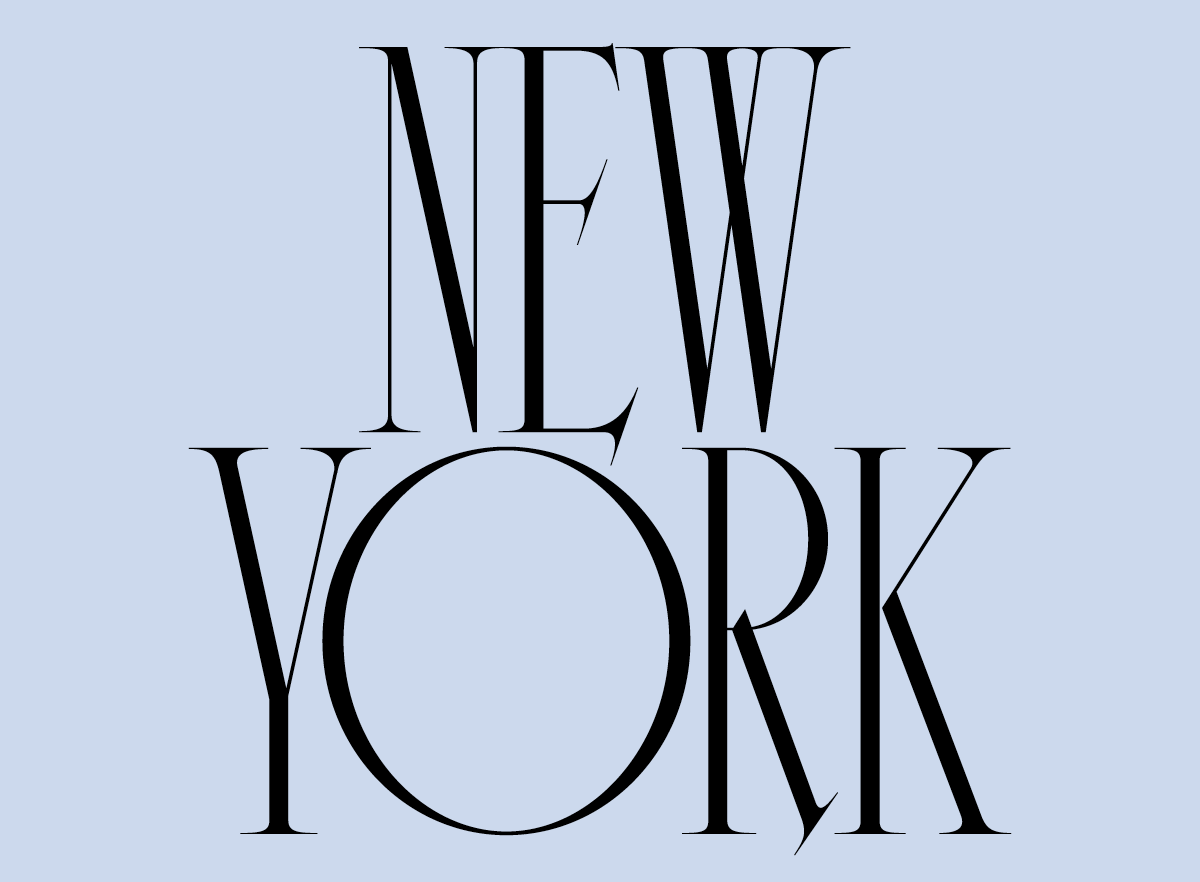Tina Smith is a New York-based freelance Art Director and Designer. Her work specialises in engaging typography-focused branding solutions situated in the contexts of editorial design and art direction. We interviewed Tina to find out about her design practice and the work she most enjoys doing.

Amber: Hi Tina, so, tell us more about your general design background? How did you get into Type Design?
Tina: I’d always wanted to be a graphic designer from a young age. I’m originally from Montana and got a BFA in graphic design from Montana State University. During my time there, I saw a talk by Dana Tanamachi and saw how a focus on type could be a career path in graphic design. I did a travelling semester in Italy, and my professor made the syllabus all about typography. We observed typography around us and drew it all by hand, and I fell in love with type and started focusing on it. I began an expressive personal type project and took workshops at the Cooper Union. I moved to New York City and worked at the branding studio Partners & Spade for four years where I created logos and identities for their studio.
I started seeing how I could use type and lettering to express the essence of a brand. I worked on projects for clients like Warby Parker, A24, Target, and Etsy. Meanwhile, I continued taking workshops at the Cooper Union and eventually enrolled in the Type@Cooper program, where I learned how to actually draw a typeface for the first time, not just logos and lettering pieces. Since last year, I’ve been a freelance designer, contracting at The New York Times Magazine and Google Creative Lab. I’ve also started personal typeface design projects.

A: What a journey! So tell us about your day to day as a creative?
T: I currently freelance full time at Google Creative Lab, and I go into the office daily. I focus on branding there, so I spend most of my time thinking about brand systems and creating identities. I spend some of my time creating posters and coming up with ideas for current and new projects. In the evening, before bed, I’ll do some personal work. I’ve made a challenge to work on my new typefaces at least 15 minutes per day since January 1, so I’ll spend 15 minutes to two hours updating my three typefaces.

A: Do you have a particular method or process when you create your work?
T: I tend to procrastinate and do best when I give myself some constraints or challenges. At the start of a project, I’ll give myself time to figure out guidelines that will help me get to work. I find I do my best when I jump in and start making, and see what works over time. I’m an intuitive designer and often go by what feels right. I often have images in my head that I want to create, so I try to get them down and analyze them later. I don’t tend to think too much about conceptual frameworks until I’ve gotten some things down, and can start to think about them more critically. Once I’ve got some work to look at, I start editing and making decisions to further the concept or answer the brief.

A: What’s been your favourite type project you’ve worked on?
T: My current projects! I’m currently creating three typefaces and working on them daily. Each started as a lettering piece over the last few years and I always wanted to make them usable typefaces. I decided to start a 100-day project—something that’s previously worked well for my personal projects—to challenge myself to work on them every day. I’ve been surprised by my progress. I was originally going to only do one typeface, and I’m currently doing three. It’s been a lot of fun to see how it’s come along and how new glyphs have changed the personality of each.

A: Well we certainly can’t wait to see them. Whilst you work with clients such as the New York Times, how do you feel newspapers treating type at the moment?
T: It’s really exciting to see how editorial design has evolved over the last several years. With the advent of digital experiences, it seems there’s been a lot more support for interesting print work. I freelanced at The New York Times Magazine for seven months, creating feature designs, and it was amazing to see how the team there created a conceptually and beautifully designed magazine each week. For each feature article, we created concept-driven layouts working with type and images, and it was inspiring to see all the modern and unexpected type treatments. I’d love to get back to editorial design—it’s one of the most interesting ways to experiment with type.

A: What advice would you give to a type designer today when facing a client?
T: This seems obvious, but definitely get a clear brief! Set all expectations and detail process beforehand so you’re not bogged down by those things later in the project. Have a reason for the design choices you’ve made and be prepared to talk through those.

A: Finally, any exciting future projects we can expect?
T: I’m working on three typefaces (Porphyry, Fizia, and Nolita) that I hope to release later this year. I’m excited to start more, and hopefully some book designs.
Thank you Tina for your answers. Check out her work here — www.tinasmithdesign.com/








